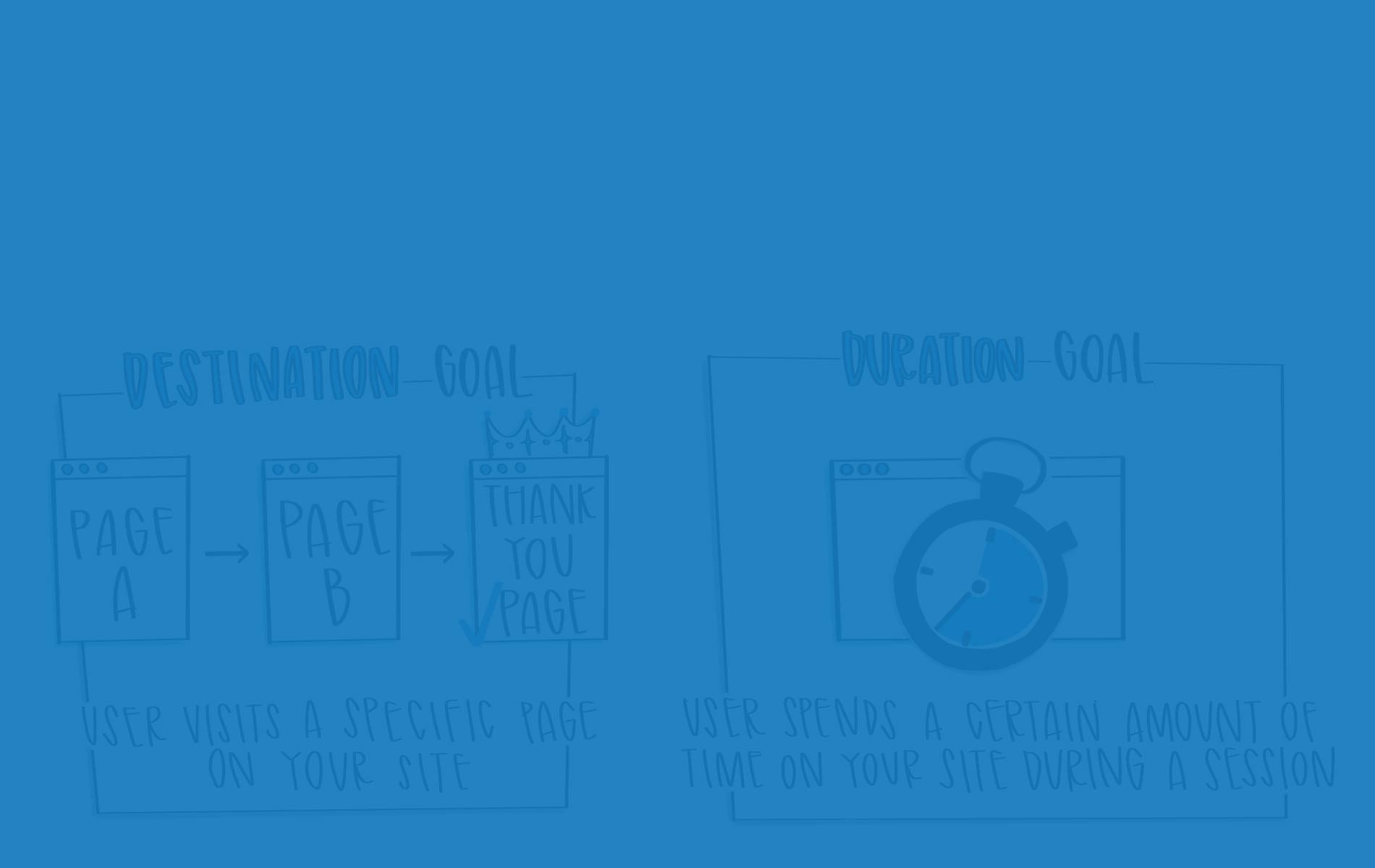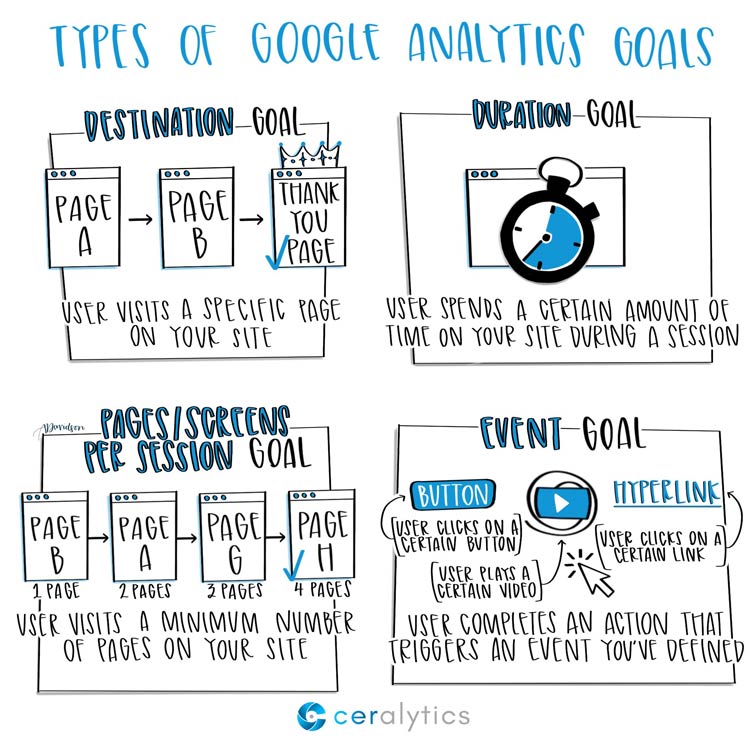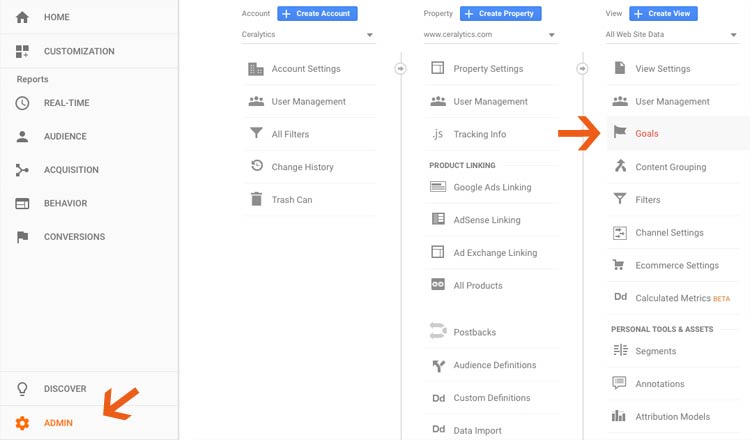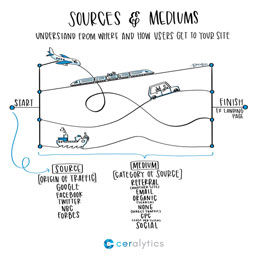Google Analytics can be a daunting application. There are seemingly infinite numbers of ways to cut data to find out what your audiences are doing on your site and how they got there. Luckily, most of this data is built-in functionality.
However, one of the most important aspects of Google Analytics is not built-in, and requires you to set it up. That aspect? You probably guessed it: Google Analytics Goal Conversions.
What’s a goal conversion?
In the simplest sense, a goal conversion is an action that you want your audience to perform on your site. For example, downloading a white paper or signing up for a demo of your product.
There are four types of goals you can setup in Google Analytics.
Destination goals
Destination goals are exactly what they sound like. When a user hits a page that you specify, Google Analytics will count it as a conversion. For a lot of conversion goals, this is a thank you page that’s displayed after someone fills out a form or orders something on your site. Destination goals are probably the most common goals in Google Analytics, and can give you important information such as:
- Downloads of gated content
- Newsletter sign ups
- Demo/pricing requests
- New user accounts created
If your website offers any of these, you should have goals setup for them.
When setting up a destination goal, you will only be putting in the directory/page into the Destination box, not the full URL. So you would put /thank-you/ instead of mysite.com/thank-you/.
In this goal type you also have the option to give the goal a value. If a new newsletter signup is worth $50 to your marketing team, you can add that value into your newsletter signup goal.
You can also setup required steps to get to that destination page. For example, if you have a shopping cart that requires multiple steps, you can put the necessary steps in the funnel (but not the destination step.) This will allow you to see where people fell out of your goal funnel in the Funnel Visualization section of Google Analytics.
Duration goals
Duration goals track how long someone has been on your site. This can be a good goal to track engaged users on your site.
The duration time you want to measure will vary by site, so pick a duration that means something to you. Do audiences who have a duration over 5 minutes convert higher on your site? Then that might be a good duration to start with. We’ve had clients who setup duration goals for 3 minutes, 5 minutes, and 10 minutes all under separate goals.
One thing to keep in mind with duration goals is how time on site is calculated in Google Analytics. Duration isn’t 100% accurate by any means, but it can still serve as a litmus test for which audiences are sticking around and which are leaving the site quickly.
Pages/Screens per session goals
Another way to measure engagement is to look at the number of pages or screens a user visits during a session. This goal allows you to set a minimum number of pages/screens a visitor needs to visit before the goal is fired. Again, this varies by site. Some sites see a visitor who visits 3 or more pages as an “engaged” visitor. For other sites, the number could be higher.
Event goals
Event goals are the most complicated to setup, but can be some of the most valuable goals in Google Analytics.
An event in Google Analytics needs to be “fired” from code, it’s not built-in functionality. Common events would be playing a video (since the video doesn’t load a new page, Google Analytics needs you to fire code to it when the user clicks “play” on the video), clicking a button on the site that doesn’t load a new page, clicking an external link, or even scrolling down a page.
Events are versatile, but can get complicated quickly. There’s a good write up on event goals over on LunaMetrics if you want to dive into it further.
Setting up Google Analytics Goals
As mentioned before, Google Analytics Goals require setup on your part. You can find them under the Admin tab, and then under Goals.
You will be presented with any goals you currently have setup, as well as the option to create a new goal with the +NEW GOAL button.
The 3 steps to setting up a new goal
The first step is the Goal setup, where you can either select from a template of existing goal types in Google Analytics, or choose Custom. Here’s a helpful hint: all of the templates are all just iterations of the 4 main goal types, so just check “Custom” and click Continue.
The second step is the Goal description. Here you will give it a name and select the goal type. You can also select the Goal slot ID, which is just where the goal will be saved and accessed later in Google Analytics. You only have 20 goals that you can setup in Google Analytics, and they automatically get put into Goal Sets of 5 goals (Goals 1-5 are Goal Set 1, Goals 6-10 are Goal Set 2, etc.)
The third step is the Goal details. This is where you give the conditions for the goal to fire.
- For Destination goals, this will be a page name, an optional goal value, and optional funnel steps.
- For Duration goals, you will assign a duration time and optional goal value.
- For Pages/Screens per session, you will assign the number of pages/screens someone needs to view for the goal to fire. You also have the option to add a goal value.
- For Events, you will have four options: The event category, action, label, and value. Read more about setting up Event goals here.
Each goal type will also allow you to verify your goal. After you set the criteria for your goal, verify it and make sure you’re getting the result you were looking for.
Unfortunately, Google Analytics goals are not retroactive. They start counting from the time you set them up. So you won’t be able to see how many goals occurred in the past if those goals weren’t setup.
Goals can be a lot of work to setup, so if you need help, just drop us a line!
About Sketchalytics
Each week we send out a micro-lesson in marketing and/or business.
Our goal is NOT to give you best practices to go out and do what other people do. You can get that anywhere.
Instead, our goal is to give you knowledge that you can apply to your own organization to make the best decisions possible.
If you know anyone who you think would benefit from Sketchalytics, please feel free to share this with them so they can sign up.




